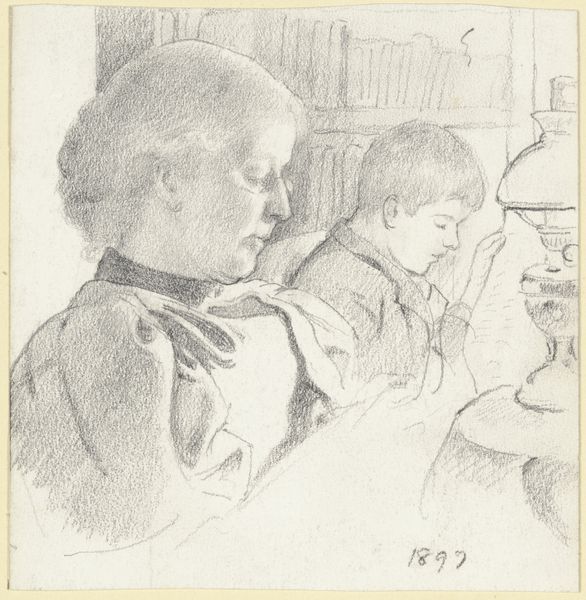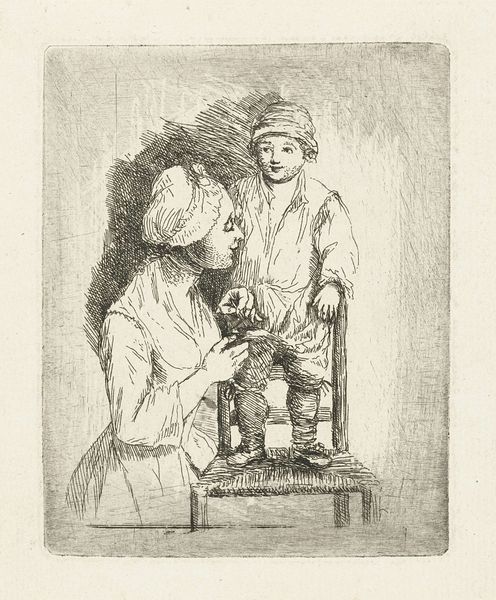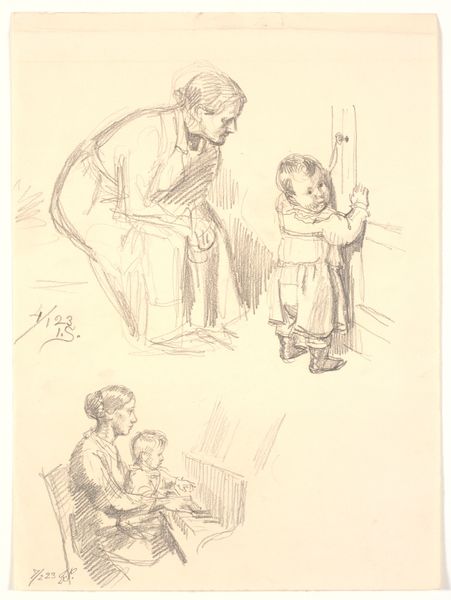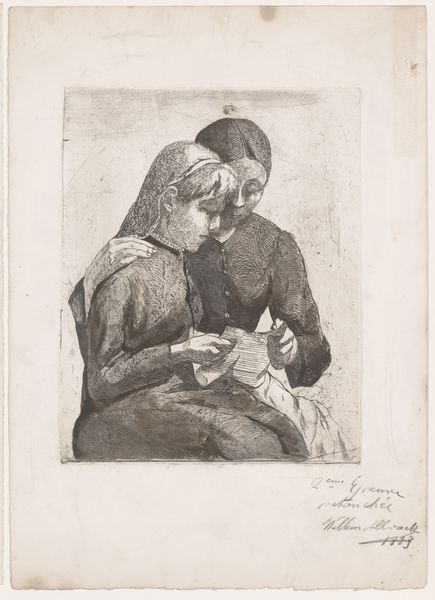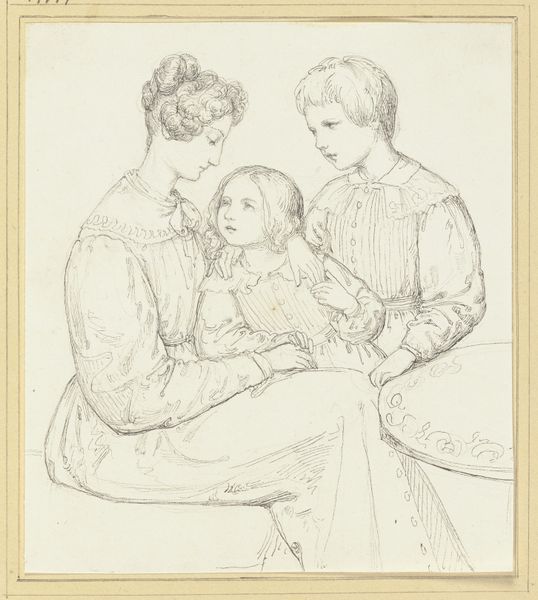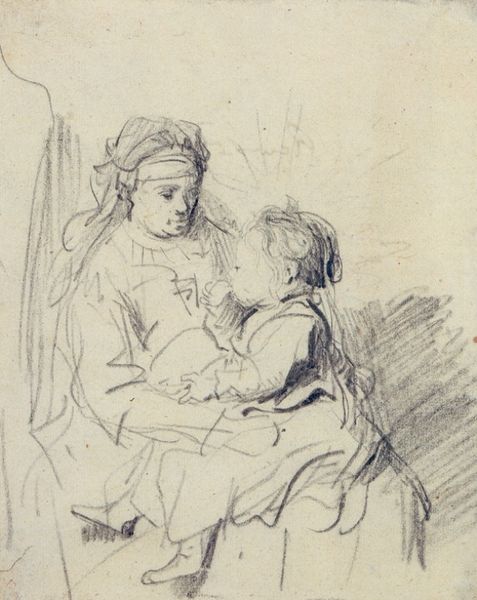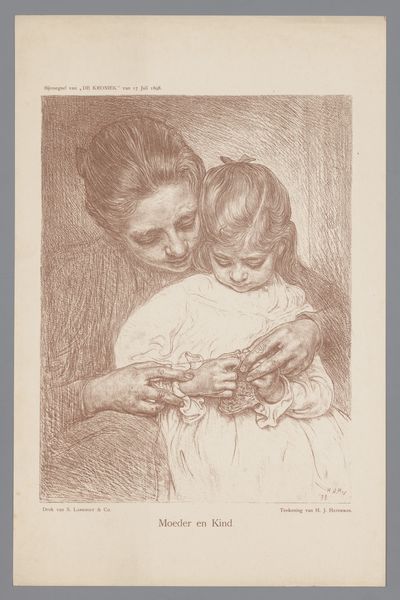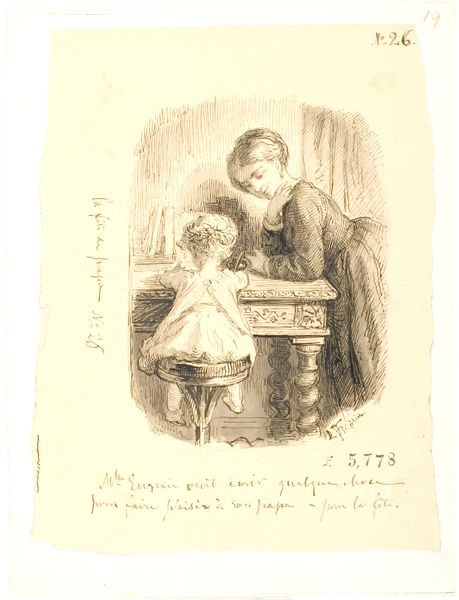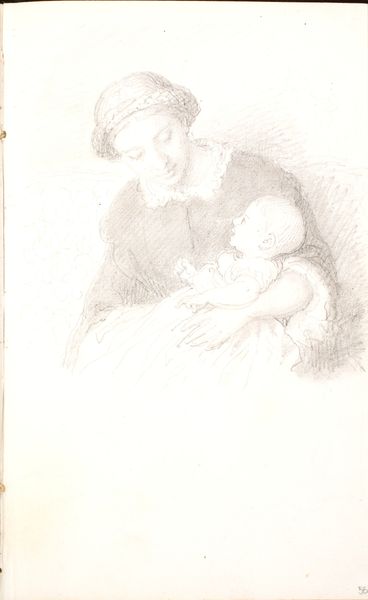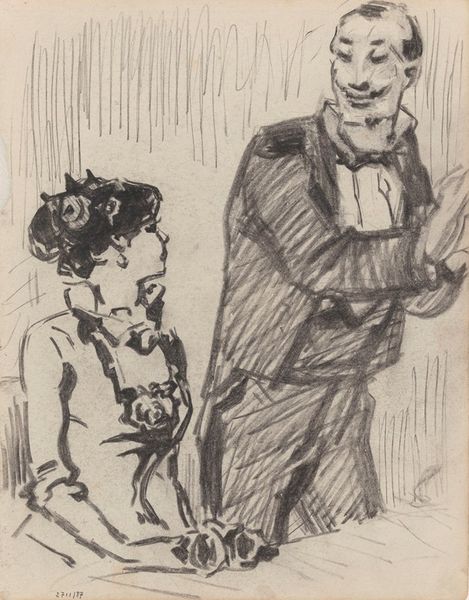
drawing, pencil
#
portrait
#
pencil drawn
#
drawing
#
amateur sketch
#
facial expression drawing
#
light pencil work
#
pencil sketch
#
figuration
#
portrait reference
#
idea generation sketch
#
pencil drawing
#
pencil
#
portrait drawing
#
pencil work
#
genre-painting
#
realism
Dimensions: height 162 mm, width 196 mm
Copyright: Rijks Museum: Open Domain
Curator: This is Adrien Emmanuel Marie’s drawing, “Jongen en meisje, ten halven lijve,” created sometime between 1858 and 1891. Editor: It feels intimate, doesn’t it? The muted greys, the soft lines of the pencil. It evokes a quiet domesticity. Curator: Absolutely. Consider the materiality. Marie employed pencil—a readily accessible, portable medium. It suggests a certain accessibility, both for the artist and potentially the audience, steering clear of the grand, academic traditions prevalent then. Editor: The very use of drawing, as opposed to painting, implies something about artistic training and perhaps, even societal expectations for the artist at the time. Who were Marie's intended viewers? Was this a study, a private exercise, or was it meant for a wider audience? And how does the availability of art supplies dictate who gets to participate in artmaking? Curator: Those are crucial points. Also, the texture of the paper itself seems quite rough. It adds to the work's raw, unfinished quality, directing us toward the artistic process. Is the rough paper stock all that was readily available at this time, or did he actively seek out this surface to contribute to this "raw" appearance you mentioned? Editor: It could speak volumes about the economics of art production in that period, and to his access to quality art materials. The portrayal of children, seemingly caught in an everyday moment, would undoubtedly resonate with certain segments of society, yet the medium might have restricted its acceptance within the more "serious" art circles of the time. Curator: The social positioning of drawing versus painting would absolutely factor into that reception. There is very minimal shading here; it seems the artist aimed to capture their likeness and relationship without heavy layers of process. Editor: A sketch like this could be politically charged just by the act of choosing children of a certain class and presenting them with this directness. Whose children are depicted? And where might a viewer encounter this drawing? The when and where shape how it will be received, doesn’t it? Curator: Indeed. So much rides on how such imagery circulates and who controls those channels. The material simplicity, combined with the social implications of subject matter, open fascinating avenues for investigation. Editor: I'll definitely be thinking more about the politics of imagery, the access to creation, and this interplay between public role of art and the individual lives it portrays.
Comments
No comments
Be the first to comment and join the conversation on the ultimate creative platform.

